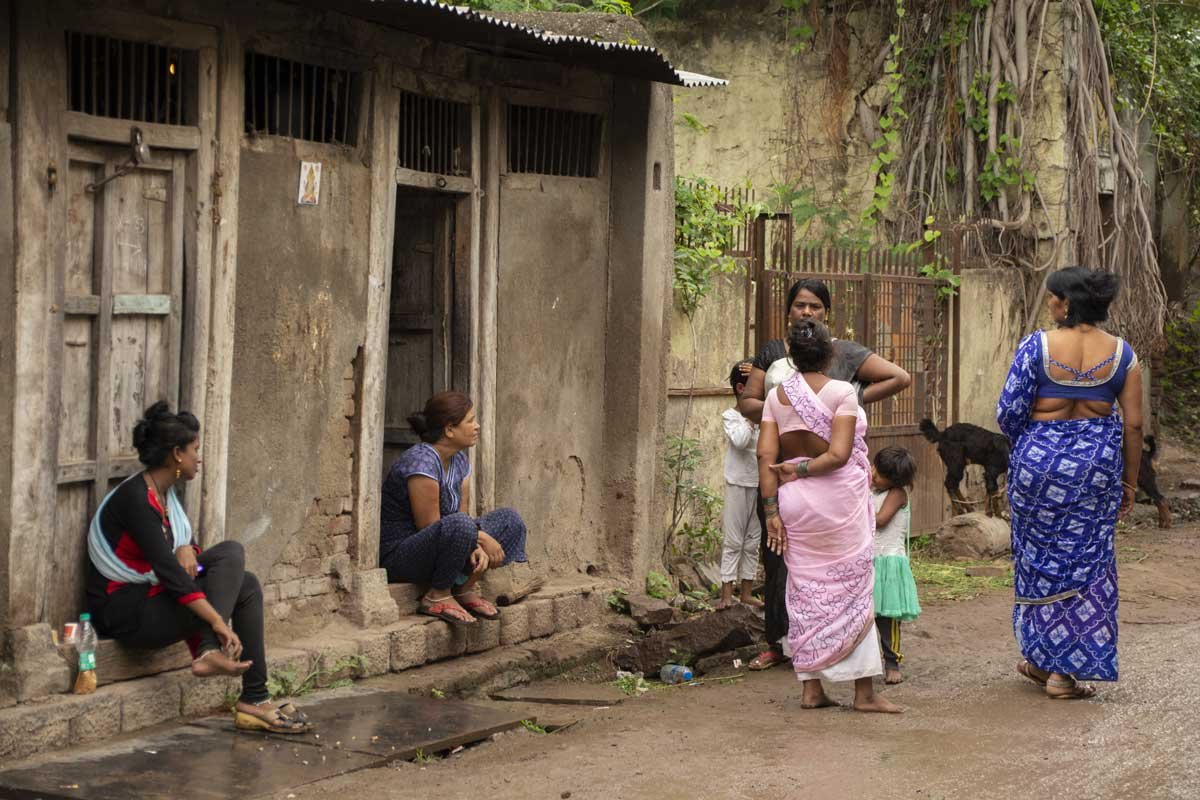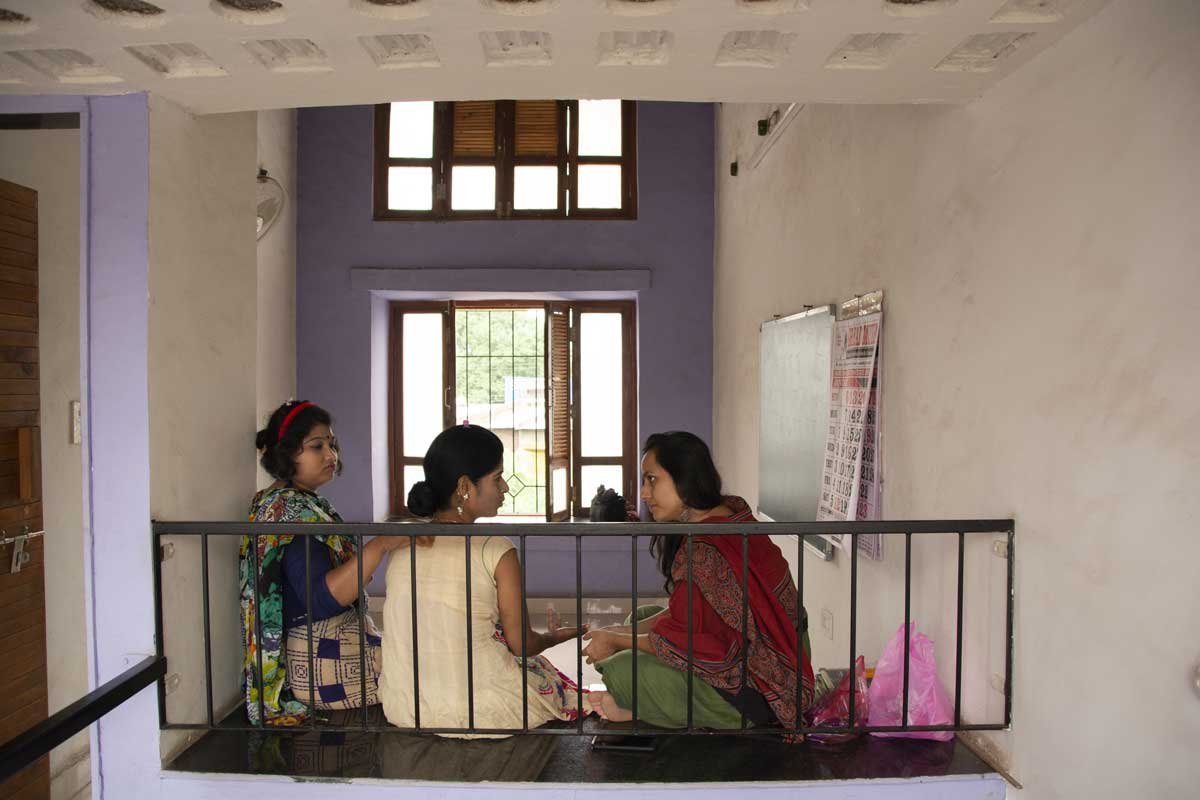OVERVIEW
Niramay is a home for women employed in sex work in Shevgaon, a town in the Ahmednagar district of Maharashtra. The idea behind Niramay was to begin a conversation around the health and safety of thousands of women and children living in hundreds of red light areas across the country. It is imperative that their built environment be closely examined and improved and we begin to look at the women not just as sex workers but as human beings who deserve a clean, safe, and hygienic place to live and work.
CONTEXT
The brothel area used to be on the edge of Shevgaon, then a small town. Over time, as the town grew, the neighbourhood where sex workers operate has become an integral part of the urban area. Most of the workers here migrate seasonally from Rajasthan, Uttar Pradesh, West Bengal and other parts of Maharashtra. During our first meeting with them they were incredibly warm and welcoming, yet cautious. They would hesitate to show us their places of work for the rooms were physically in shambles, poorly ventilated and very little regard to health and hygiene practices. The idea that they deserve a clean and healthy place of work was an alien one. We set out to simplify this idea by asking them a set of questions related to the physical space they operate in, and this proved effective.
OUR APPROACH
Before we got to the drawing board, we wanted the women to envision what a safe space for a sex-worker could look like. We decided to organise a design workshop but soon hit a roadblock; the women didn’t feel comfortable with the tools of a design exercise – markers, paper, blocks – as most of them hadn’t held a pen in their lives. Their hesitation to engage with these materials became a challenge for us.
However, they had all at some point made a rangoli, an artwork made on the floor during special occasions and festivals using coloured rice or sand. This led to the idea of using chalk, water and thread to imagine the designs with the women. Interestingly, what emerged was not just the access to water and sanitation facilities that they had asked for in the initial survey, but art and plants were introduced into the design as well.
The upper floor of Niramay Place was designed as a gathering area to give the women a space to be themselves and come together without the fear of authorities or the anticipation of customers. After various discussions with the women on how they would want to use the space, many expressed their concerns over low literacy rates and their wish to educate themselves.

A few weeks after Niramay Place was inaugurated, literacy classes were started. There was a lot of hesitation among people to come to a red light area to teach these women. However, Lata, a local teacher, came forward to run classes twice a week. For the first few weeks, very few women came to attend the classes but the numbers grew slowly and steadily until almost 15 women gathered to study with Lata.

Design and Build
The design development of Niramay began in November 2017 and construction in December 2017. Taking inputs from the participatory design process, the design incorporated specific features that the women had asked for, like a back entrance and a community space. Construction process included the use of material like glass bottles to allow natural light to filter into the community space. Within a span of 3 months the space was ready to be used.
Impact
The biggest impact of Niramay Place was seen in the measures taken by the women to keep their workplaces clean. While they were initially hesitant to let us into their workplaces, one of the women eagerly led us into her room a few months after Niramay was built. Though structurally in shambles, the space was very clean and hygienic. Other women too started taking us to their workplaces, and proudly showed every nook and corner that they had reorganised. They ensured there was enough water at all times and stocked up on soap, which was not the case before. They were finally seeing some value in paying attention to their work space and their personal health.
The community space on the first floor of Niramay Place doubled up as a classroom for adult literacy lessons. Due to constant raids by the police, however, more and more women are leaving the streets, and the COVID-19 pandemic has forced a lot more women to return to their native villages. The classes have been discontinued since 2020 due to the pandemic but we hope to support them in reviving the sessions once the situation improves, even if two women show up.
Learnings
Niramay Place was initiated as a way to bring health, hygiene and dignity to the lives of the women in sex work. This space may or may not survive in its present form, but we hope that it inspires sex workers and the people working with them to take issues of the built environment seriously. In discussions around the need for improved living conditions for these women, the moral and legal debate of sex work often tends to take centre stage. As architects and designers, we believe that the right to a safe, healthy, and clean environment should extend to all. This core value has been at the heart of this project and has truly guided us in creating a space that brought respite to the sex workers, however fleeting these moments may be.
- Shevgaon, Maharashtra, India
Project Details
Year: 2018
Status: Completed
Location: Shevgaon, Maharashtra, India
Size: –
Services: Design Research, Community Engagement, Participatory Design and Mapping, Public Space Design
Partners: Sex-workers of Shevgaon, Snehalaya, Nirvana Design Studio





























